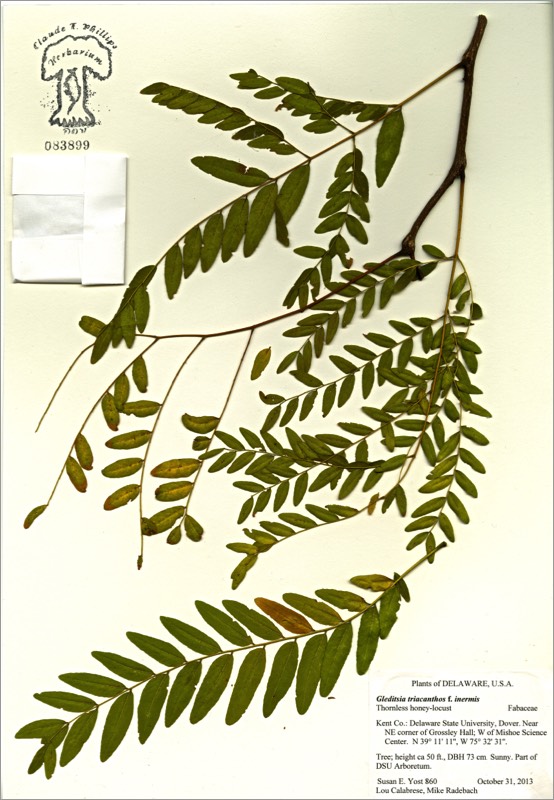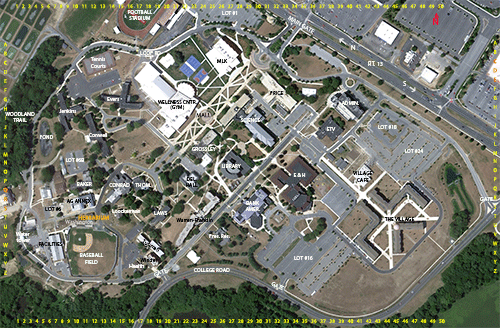**Thornless honey-locust


Typical fruit of Gleditsia triacanthos species from another tree;
form inermis often lacks fruits.
**Gleditsia triacanthos f. inermis
THORNLESS HONEY-LOCUST
Fabaceae
E. North America
Location: map coordinates K-27 (near northeast corner of Grossley Hall), N 39°11'11'' W 75°32'31''
Planting history: presently unknown.
Description:
**Adventive species (not native to Delaware, but native to N. America and now growing wild in DE). Species listed as Invasive in Delaware
THORNLESS HONEY-LOCUST
Fabaceae
E. North America
Location: map coordinates K-27 (near northeast corner of Grossley Hall), N 39°11'11'' W 75°32'31''
Planting history: presently unknown.
Description:
- deciduous tree
- etymology: Gleditsia from Robert Gleditsch (d. 1786), German botanist and physician; triacanthos = 3-thorned; inermis = unarmed, spineless
- this ornamental form, inermis, which apparently occurred naturally, is thornless (the species Gleditsia triacanthos normally has large thorns which may be single or branched)
- leaves alternate; pinnately (feather) compound, once- or twice-compound
- flowers whitish; male and female in separate clusters on same tree
- fruits: the species has long, narrow, woody, dark brown legumes (pods); this form (inermis) often lacks fruits (as well as thorns)
- wood strong, heavy, durable
- may not fix nitrogen, unlike most other legumes; does not appear to have root nodules
- native to north-central USA
**Adventive species (not native to Delaware, but native to N. America and now growing wild in DE). Species listed as Invasive in Delaware


HIT REFRESH TO START LOCATION GRAPHIC